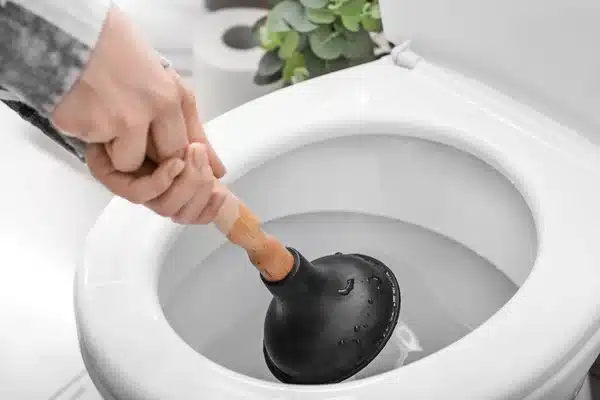Clogged toilets : what can you do ?

A blocked toilet is a major inconvenience that can happen at any time. When faced with this situation, it's important to stay calm and implement the right solutions to get your toilet working again. This article offers you a complete guide to unblocking your toilet effectively, using natural and cost-effective methods.
Call in a professional plumber
To avoid further damage to your property, we recommend that you call in a professional plumber near me. A plumber has the skills and experience needed to identify the cause of the blockage and treat it effectively, even if it's deep in the pipes.
A voir aussi : User experience: how does the New Zealand eTA Assistant app improve traveler satisfaction?
What's more, they have special tools at their disposal, such as endoscopic cameras and high-pressure unblockers, which enable them to carry out their work quickly and accurately.
Identifying the cause of the blockage
Before you start unblocking, it's essential to identify the nature of the blockage. This will enable you to choose the most appropriate method for removing it. The most common causes of blocked toilets are :
A découvrir également : Car Insurance in France: a guide for english-speaking drivers
- solid waste: excess toilet paper, wipes, sanitary towels, etc.
- Fats: edible oils, food scraps, etc;
- scale: accumulation of limescale and organic residues on the walls of pipes;
- trapped objects: children's toys, toothbrushes, etc.
Unclogging toilets using natural methods
In most cases, it's possible to unblock a toilet without using chemicals that are harmful to the environment and your health. Here are some effective natural methods:
Baking soda and white vinegar
To unblock blocked toilets using bicarbonate of soda and white vinegar, a natural and effective method, here's the recommended procedure:
First, pour a generous amount of bicarbonate of soda into the toilet bowl - about half a cup. Baking soda is a gentle abrasive that helps dissolve organic blockages.
Secondly, add undiluted white vinegar, about a cup. Mixing the acidic vinegar with the bicarbonate of soda will cause a chemical reaction and form a foam.
Thirdly, leave the foamy mixture to act for several minutes, at least ten minutes. This reaction will break down and soften the cork.
Fourthly, after waiting a sufficient amount of time, pour boiling water into the bowl. The heat will also help to melt the residue.
Finally, to make unblocking easier, you can use a plunger or drain cleaner at this stage by plunging it vigorously into the bowl.
If the blockage persists despite this gentle method, it may be necessary to use more advanced techniques with specific unblocking tools or to call in a professional.
Hot water
To unblock your toilet with hot water, there are clearly defined procedures to follow.
Boil a large quantity of water - around 4 to 5 litres. The more the better. The water must be boiling to be really effective.
Once the water is boiling, slowly pour some of it into the bowl of the blocked toilet, taking care not to fill it to overflowing.
Wait a few minutes for the water to act on the clog to soften and partially break it down.
Pour in a second portion of the remaining boiling water, again slowly and gradually.
Leave to stand for a further 10 to 15 minutes. The very hot water will cause the pipes and obstructions to expand, making them easier to break up.
Then try to unblock the blockage by flushing the toilet several times if possible. You can also use a plunger or pipe cleaner to help dislodge the softened blockage.
If the unblocking isn't complete, repeat the operation by pouring in the rest of the boiling water.
Extreme heat is an excellent natural ally for removing many blockages. Combined with water pressure, it can often unblock a toilet without the use of harsh chemicals.
The plunger
By following these simple steps, you should be able to unblock your toilet quickly and effectively using a plunger.
Inspect the bowl: if there's too much water, try removing some with a bucket or cup.
Dip the suction cup into the bowl: make sure the suction cup completely covers the drain hole at the bottom of the bowl.
Create air pressure: fill the bowl with hot water if necessary so that the suction pad is submerged. Press firmly on the suction pad to expel the air.
Move back and forth: pull the suction cup vigorously upwards and then release it quickly. Repeat this vigorously several times.
Flush the toilet: observe whether the blockage has been dislodged. If not, repeat steps 2 to 4.
Preventing toilet blockages
Preventing toilet blockages
To avoid recurring toilet blockages, it's important to adopt a few good practices:
- limit the amount of toilet paper you use;
- don't flush wipes, sanitary towels or other solid waste down the toilet;
- regularly clean your drains with natural products, etc.
Clogged toilets can be a source of stress and inconvenience. However, by following the advice given in this article, you should be able to unblock them quickly and effectively, using natural, environmentally-friendly methods. Don't forget that for the most stubborn blockages, you can always call in a professional plumber.
